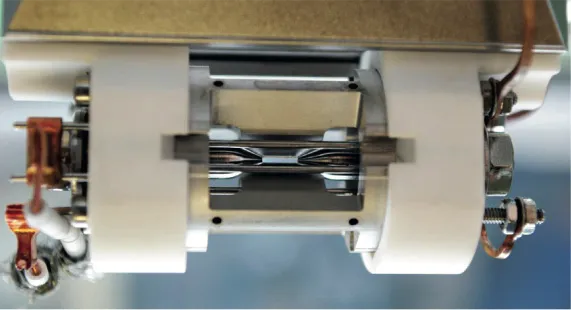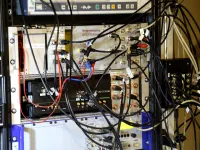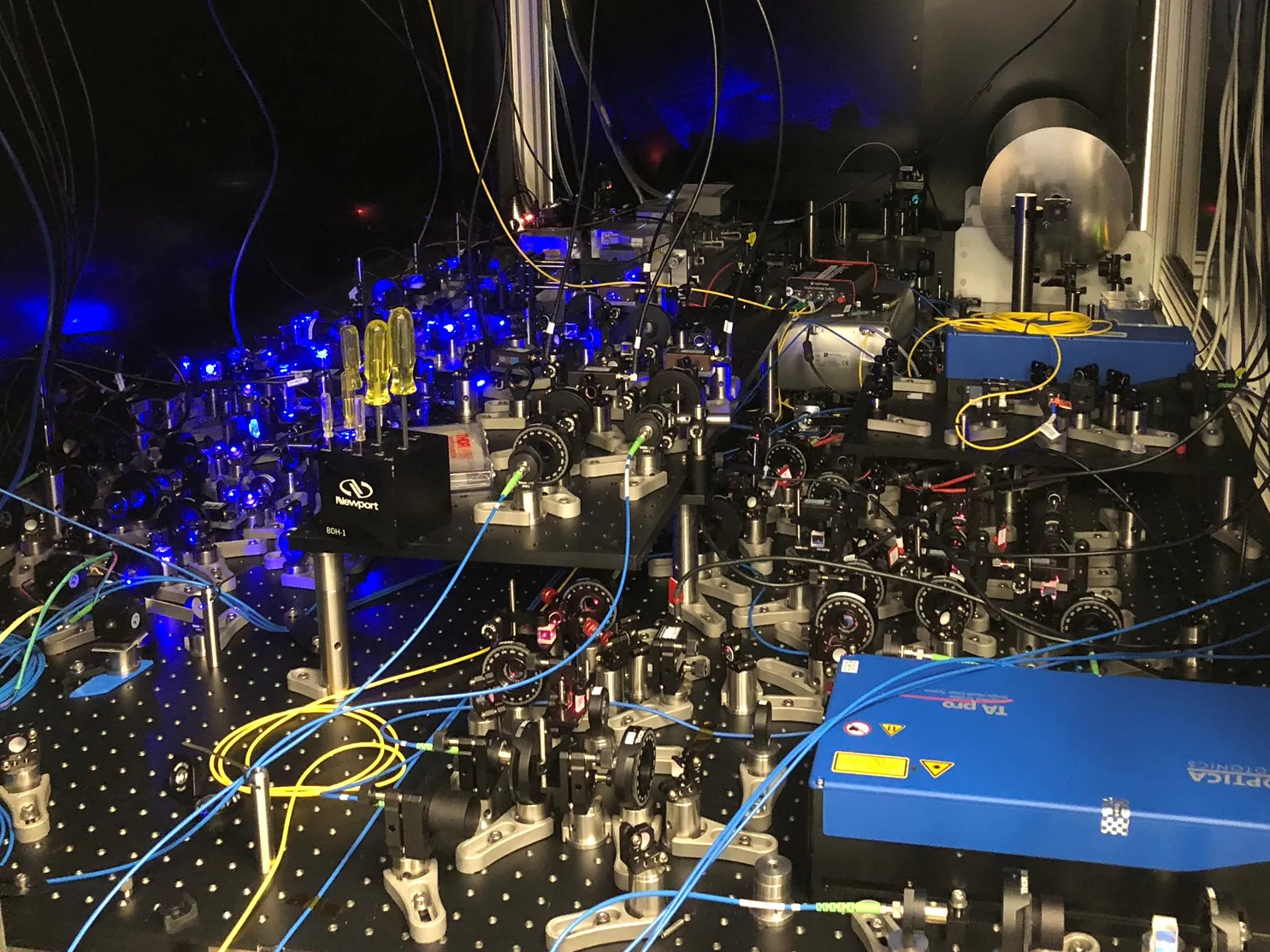Quantum Computing
The study of quantum science, particularly quantum information science, is an area of research that has seen a rapid increase in activity since the beginning of the 21st century. The field of investigation promises enormous advancements in technology that may have a profound effect on the way we think and use computing and communication in the future. By exploiting the principles of quantum mechanics, scientists are studying the behavior of qubits, quantum bits of information, as they are subjected to different physical conditions. Instrumentation such as arbitrary waveform generators (AWGs) and digitizers play a crucial part in this process. AWGs allow the generation of an almost unlimited range of waveforms that can be used to produce electromagnetic signals in the radio-frequency range, that in turn actuate the materials under investigation. Simultaneously, digitizers allow the capture and rapid analysis of resulting signals that reveal the qubit behavior. Together, covering the whole toolbox for control of qubits.
Spectrum Instrumentation's AWGs offer multi-channel waveform generation with output rates up to 1.25 GS/s and 16-bit resolution. The multi-channel design makes it possible to scale up systems to simultaneously control multiple qubits, while the fast output rate allows versatile signal generation, covering frequencies up to 400 MHz. For applications requiring even higher frequencies, upconverters can be used and potentially extend the frequency range to tens of GHz.
With their very high resolution and synchronous output capability the AWGs are perfect for producing the required actuator signals. They also include a host of replay and trigger modes to make it possible to output an almost unlimited variety of waveshapes. Fully programmable, the AWGs can be quickly reconfigured and, thanks to their large on-board memories, can even output sequences of waveshapes while new actuator signals are being loaded!
The AWG can be used as a generalized Direct Digital Synthesis (DDS) device. Extending beyond the single-tone DDS, handing the user multi-tone capabilities.This can be done by programming the AWG memory indovidually or by using a versatile multi-carrier DDS mode option available for teh Spectrum AWGs.
This enables researchers to think in energy domain and drive multiple (quantum) state-transitions simultaneously.
Whereas, AWGs play a crucial role in creating the waveforms necessary to study qubits, digitizers play a key part in determining how the qubits react under the various test conditions. Spectrum Instrumentation offers a wide variety of multi-channel digitizers that have sampling rates up to 10 GS/s, bandwidth over 3 GHz and vertical resolutions from 8 to 16 bit. To extend the useful signal frequency range that the digitizers can cover they can also be used with off-the-shelf downconverter technology. Furthermore, the Spectrum digitizers are optimized for dynamic performance to ensure that signals are acquired with high SNR and low noise. The digitizers are equipped with fully programmable front-end amplifiers and can be used with a range of low noise external amplifiers that make it possible to acquire and analyze low level signals on the µV level.
Our range of products is used in a multiverse of quantum computing platforms, such as:
- Neutral atoms
- Superconducting
- Trapped Ions
- NV-centers
- Molecules
- Spins in silicon
Moreover, our high-speed AWGs are a vital part of the modern-day toolbox of a quantum researcher, allowing her/him to:
- Drive AOMs for laser frequency, amplitude and phase controlling.
- Drive AODs for laser beam stirring and generation of beam / tweezer arrays.
- Generate a multitone-RF source for driving (fiberized-) EOMs, to induce internal atomic-, molecular- and quantum-state-transitions coherently.
- Generate a multitone-RF source for RF-antenna solutions.
- IQ-mixing, with a source of frequency- or amplitude-modulated signals.
- A signal source for Software-defined Radio (SDR)
Spectrum Product Features
- AWGs with output rates up to 1.25 GS/s and frequencies up to 400 MHz
- Multi-Carrier DDS mode option
- Ultra-fast triggering with Segmented Memory and FIFO Readout/Replay
- Digitizers with sampling rates up to 10 GS/s and Bandwidth over 1.5 GHz
- 8, 14 and 16 Bit Resolution
- FPGA based Averaging and Peak Detection
- Digitizers with sampling rates up to 10 GS/s and Bandwidth over 1.5 GHz
Matching Card Families
Related Documents

Case Study: AWG used for Quantum Research
Precision is always important in research and there can be few research areas needing greater precision than that of quantum research. The Institute for Quantum Optics and Quantum Information at the University of Innsbruck, Austria needed an Arbitrary Waveform Generator (AWG) to generate a wide variety of signals for their research.

Case Study: AWG used for atomic experiment at Stuttgart University
The Stuttgart University has chosen a Spectrum Arbitrary Waveform Generator for their experiments in which single atoms in a diamond are replaced by nitrogen atoms. This method is a base for applications like a magnetic field detector at the atomic level or a qubit in a quantum computer.

Case Study: AWG-card by Spectrum used to move around single atoms
How do you determine what is going on when you can't actually see the components in the system you are investigating? This is the challenge when investigating the quantum behavior of electrons in a lattice of ions. The solution being created by the Physics Department at the University of San Diego, California is to build a model that is slightly larger with observable components of atoms moving in an optical lattice.
Research Papers
Nitrogen-Vacancy Center Magnetometry
At the Beihang University, Beijing, China, they are using an M4.4450-x8, 500 MS/s, 14-bit Digitizer to research a pulsed lock-in method for ensemble nitrogen-vacancy center magnetometry. A research paper on the topic can be found below
Research PaperSpin Readout by Gate Reflectometry
Silicon spin qubits are promising candidates for realizing large-scale quantum processors and the subject of a collaborative research effort by the London Centre for Nanotechnology, University College London, United Kingdom, Quantum Motion Technologies, Windsor House, Harrogate, United Kingdom, CEA, LETI, Minatec Campus, Grenoble, France, Hitachi Cambridge Laboratory, Cambridge, United Kingdom, Université Grenoble Alpes, CEA, IRIG-MEM-L_Sim, Grenoble, France and the Department of Electronic and Electrical Engineering, UCL, London, United Kingdom. A research paper discussing Spin Readout of a CMOS Quantum Dot by Gate Reflectometry and
Spin-Dependent Tunneling, where an M4i.4451-x8 500 MS/s, 14-bit Digitizer is used for signal measurements is available below
Spin Dynamics in Hybrid Quantum Systems
The technical University of Munich, Germany, is using an M4i.4451-x8 500 MS/s, 14-bit, Digitizer to study the spin dynamics in strongly coupled spin-photon hybrid quantum systems. The digitizer is used to acquire and analyse the I and Q components of IF signals that result from downconversion of microwaves emerging from a cryostat. A reference paper on the research is available here:
Reserach PaperQuantum Bits in Nitrogen-Vacancy
At the Walter Schottky Institute and Physics Department, Technical University of Munich, Germany they have demonstrated a way of keeping a quantum bit alive by feed-forward decoupling. The research shows that a nitrogen-vacancy (NV) center strongly couples to current noise in a nearby conductor. By conditioning the readout observable on a measurement of the current, it’s possible to recover the full qubit coherence and the qubit's intrinsic coherence time. This technique uses a 500 MS/s 14 bit M4i.4451-x8 Digitizer and is discussed in a research paper that can be found here:
Research PaperTest of two-quibit Quantum Processor
At the QuTech and the Kavli Institute of Nanoscience, Delft University of Technology, in the Netherlands they are using an M4i.44xx series digitizer to test a programmable two-qubit quantum processor in silicon. Find out how by clicking here:
Research PaperUltrafast Spectroscopy
At the Technical University of Dortmund, Germany, they are using a 5 GS/s M4i.2234-x8 Digitizer in nonstationary quantum state tomography, adapting the technique to the special requirements of ultrafast spectroscopy. A white paper on the topic can be found here:
White PaperOptical Homodyne Tomography (OHT)
Researchers are developing techniques of non-stationary optical homodyne tomography (OHT) that allows the investigation of the hidden dynamics of light fields. At the Technical University of Dortmund they are using an M4i.2234-x8 5 GS/s digitizer to acquire signals from a balanced detector as part of their non-stationary OHT system which is discussed here:
Research PaperQuantum random Number Generator
At the Technical University of Dortmund researchers are using an M4i.2234-x8 5 GS/s digitizer to help them investigate the potential to eavesdrop on a trusted quantum random number generator. They experimentally realize an eavesdropping attack and discuss the process here:
Research PaperControl of EOM for Quantum Computing
At the Technical University of Denmark they are using an M4i.6631-x8, 1.25 GS/s, 16-bit, AWG to generate the required waveforms that control the electro-optical phase modulators (EOMs) on a scalable photonic quantum computing platform. A reference paper on the development can be found here:
Research PaperAOM for Rydberg Atom Arrays
At the Department of Physics, Harvard University, Cambridge, USA they are using a Spectrum M4i.6631-x8 Arbitrary Waveform Generator to drive an acousto-optic modulator and a Rydberg laser to generate and manipulate Schrodinger cat states in Rydberg atom arrays. The research paper covering the experimental setup and results is available for download here:
Research PaperReadout of Spins in Silicon
At the Cavendish Laboratory, University of Cambridge, in the United Kingdom, they are developing methods for making of fast high-fidelity single-shot readout of spins in silicon quantum dots using a compact, dispersive charge sensor. A paper discussing the processes, which uses an M4i.4451-x8 500 MS/s, 14-bit Digitizer for signal acquisition, is available here:
Research PaperMixing-Ratio Measurements of N20
The New Jersey Institute of Technology, in the US, has been using a quantum cascade laser open path system to study N2O path-averaged mixing ratios by detecting the light backscattered from common topographic targets. The system uses an M4i.4420-x8 250 MS/s, 16-bit Digitizer for signal acquisition and a paper, discussing the detection limits and accuracy, can be found here:
Research PaperDynamic Hologram Generation for Atom Array Adressing
A thesis paper, presented to the Department of Physics and the Department of Computer Science at Harvard University, in the US, shows how an acousto-optic modulator array can be used to address a spatial light modulator from different angles. Two M2p.6568-x4 125 MS/s, 16-bit, AWG's act as a fast signal source to independently drive 16 acousto-optic modulators. The thesis which discusses the experimental setup, results and potential applications can be found here:
Research PaperEuler Insulators with trapped ION Quantum Simulator
The Tsinghua University in Beijing, China is researching the observation of topological Euler insulators with a trapped-ion quantum simulator. Their results show the advantage of quantum simulation technologies for studying exotic topological phases and open a new avenue for investigating fragile topological phases in experiments. The experiments use a DN2.663-04 1.25 GS/s, 16-bit AWG to generate the necessary microwaves and a paper on the subject can be found here:
Research PaperProgrammable Tweezer Array of Fermions
At the Department of Physics, Princeton University, in the US, they are able to prepare high-filling two-component arrays of up to fifty fermionic atoms in optical tweezers. Using a stroboscopic method, they are able to configure the arrays in various two-dimensional geometries with negligible Floquet heating. The arrays are generated by acousto-optic modulators that are driven by an M4i.6621-x8 625 MS/s, 16-bit AWG. A paper discussing the topic is available here
Research PaperDevelopment of Quantum Processor
The demonstration of a quantum processor with dynamic, non-local connectivity, in which entangled qubits are coherently transported in a highly parallel manner across two spatial dimensions, between layers of single- and two-qubit operations has been made at the Department of Physics, Harvard University, in the US. The system includes an M4i.6631-x8 1.25 GS/s, 16-bit AWG which is used as a signal source to drive two acousto-optic deflectors. A paper discussing the development can be found here and another showing the quantum phases of matter on a 256-atom programmable quantum simulator can be found here
Research PaperRaman Driving of Hyperfine Qubits
Hyperfine atomic states offer promising candidates for qubit encoding in quantum information processing. At the Department of Physics, Harvard University, in the US, they have developed a new approach that offers high efficiency, and is compatible with high-power laser sources, enabling large Rabi frequencies and improved quantum coherence. The system uses a DN2.662-04 625 MS/s, 16-bit AWG as a driving signal source and a paper discussing the methodology can be found here:
Research PaperRbCs Molecules confined in Optical Tweezers
A crucial step towards the association of arrays of single RbCs molecules, confined in optical tweezers, is the preparation of 87Rb and 133Cs in the motional ground state of a single optical tweezer. At the Department of Physics, Durham University, in the United Kingdom, they present a paper on the topic below. The system uses a two dimensional acousto-optic deflector that's driven by an M4i.6631-x8 1.25 GS/s, 16-bit AWG.
Research PaperImaging of tiny Currents in Bilayer Graphene
At the Department of Physics, ETH Zurich, in Switzerland, they are creating images of microampere currents in bilayer graphene using a scanning diamond magnetometer. Research papers, which includes experiments that demonstrate the feasibility for imaging subtle features of nanoscale transport in two-dimensional materials and conductors, can be found here and here. The system is using a DN2.663-04 1.25 GS/s, 16-bit AWG as a signal source to generate all the necessary analog and digital control signals
Research PaperAvoiding atom collisions with multiple mobile tweezers
At the Centre for Quantum Technologies, National University of Singapore, Singapore, they have demonstrated a parallel rearrangement algorithm that uses multiple mobile tweezers to independently sort and compress atom arrays in a way that naturally avoids atom collisions. The system uses an M4i.6631-x8, 1.25 GS/s, 16-bit AWG to drive a pair of AODs. A reference paper for the research can be found here:
Reference PaperSingle-particle distance measurements
At ETH Zurich, Switzerland, they are researching ways to achieve single-particle distance measurements. A research paper, foudn below, shows two complementary approaches based on spin–spin coupling or optical super-resolution imaging. In one approach a DN2.663-04 1.25 GS/s, 16 bit AWG is used as a multi-channel signal source in an ODMR/DEER microscope setup.
Research PaperRadio-frequency optically pumped magnetometers (RF OPMs)
At the University of Nottingham, UK, they are developing Radio-frequency optically pumped magnetometers (RF OPMs) that are capable of measuring oscillating magnetic fields with high sensitivity in the fT/√Hz range. A PhD thesis discussing two different RF OPMs is available under below link. In the experimental testing an M2p.5932-x4 40 MS/s, 16-bit Digitizer is used as part of the absorption spectroscopy system needed to understand the hyperfine structures
Experimet Testing